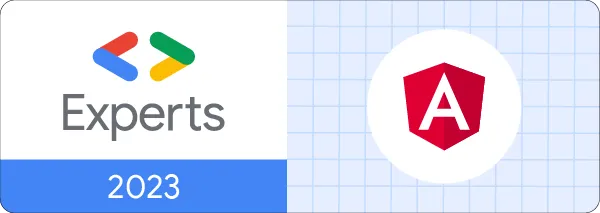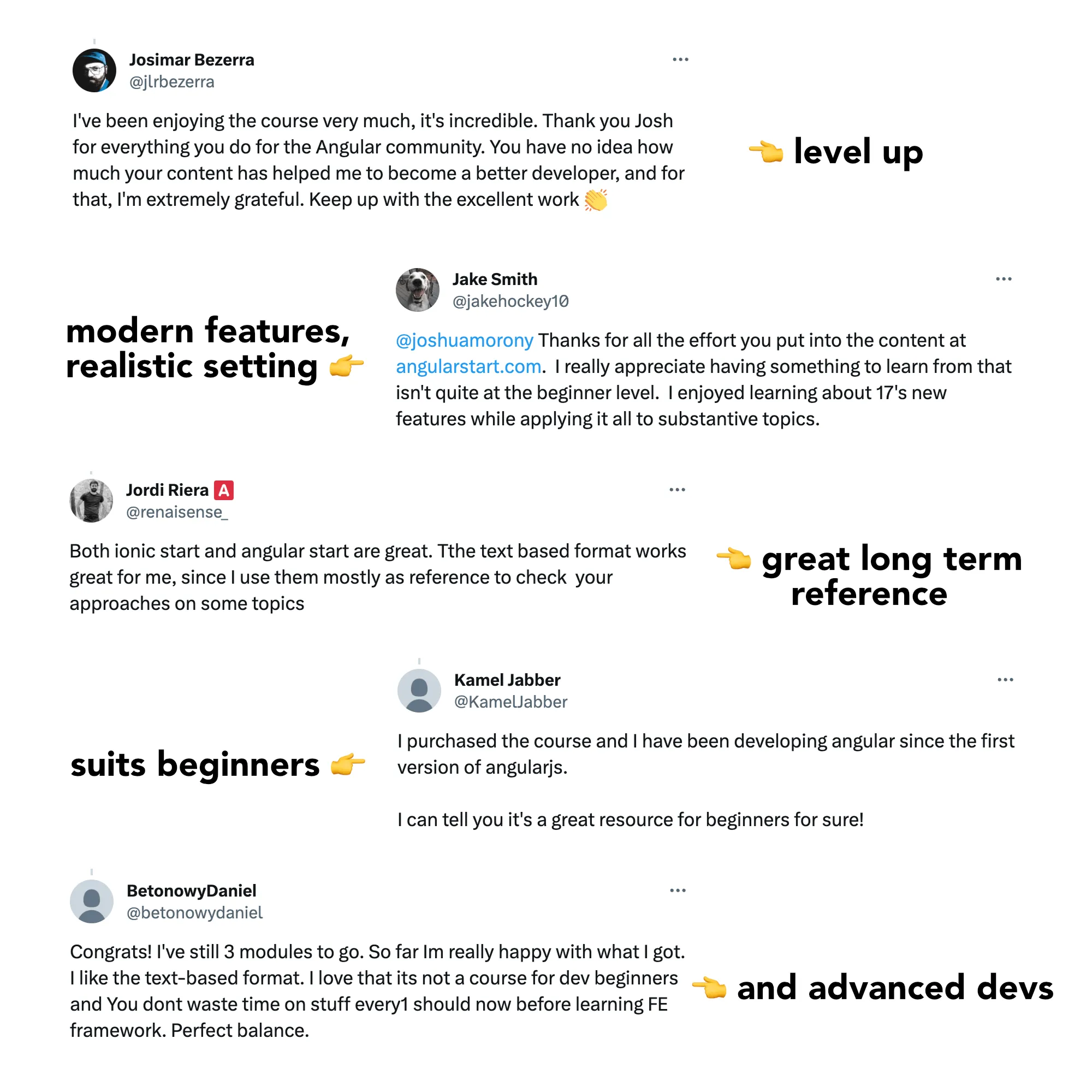
Existing member? Log in and continue learning

See if you like it, start the course for free!

Unlock full course by purchasing a membership
Learn to build professional-grade Angular Applications | Angular Start
Learn to build professional-grade Angular v20 applications using new features with modern best practices
A complete text-based guide to Angular from beginner level through to building professional-grade applications. Concepts are taught from scratch, but the content will be valuable to intermediate - and even advanced - Angular developers.
Prefer to build mobile apps with Angular? Check out the Ionic version of this course instead

Created by Josh Morony — Ionic Developer Expert and Google Developer Expert for Angular


Learn Angular the way highly skilled professionals build apps today 🚀
It was years into my Angular journey before I discovered how to go about building Angular applications the right way.
🤔 The problem is that the "right" way is quite drastically different to the "easy" way...
...and the "right" way initially just seems like the unnecessarily complicated way. But, this is only in the sense that it is "unnecessarily complicated" to learn which fingers should press which keys and in what kind of way on the piano.
In the beginning, it might seem like you should just push the keys in whatever way is easiest... they produce the same sound anyway. No need to complicate things by creating some seemingly arbitrary rules. It's not until the notes start flowing together, and you are playing more complex music, that it becomes more clear why those rules are a good idea.
The different approaches — which can loosely be summarised as imperative vs declarative/reactive — involve drastically different skills and ways to think about the structure of your application.
🤷♂️ The "right" way?
Claiming something is the "right" way to do something is pretty bold, and kind of dismissive of other styles. There is never any one true way to code. So, please don't take this phrasing too literally.
But, let me explain why I came to think of the style we will be using in this course as "the right way".
The concepts used in this course are the approaches that are used by software engineers at the best Angular companies like Nrwl — the company that created Nx and was founded by two former Googlers that worked on Angular.
Also at companies like Cisco who are one of the biggest hirers of top Angular developers.
And the concepts used in this course are also the approaches that are generally advocated for among top Angular developers and Google Developer Experts for Angular .
👨💻 But, most importantly...
The main reason this feels like the "right" way to me is because I started to find coding with Angular to be way more efficient, way less error-prone, and just way more fun once I switched to this style.
It requires a bit more of a learning investment in the beginning, but it pays off big time .
No shortcuts, we are going to build like the pros 🦸♂️
The key philosophy of this course is to make it as approachable as possible to people of different skill levels, without cutting corners that will come back to bite you later for the sake of making things easier.
As you may expect, we will be covering all of the Angular concepts you will need to build great apps.
But, on top of that, the real secret sauce of this course is that throughout our learning journey we are going to pay special attention to incorporating the following concepts:
- Reactive/Declarative coding with RxJS and Signals
- Smart/Dumb component architecture
- Co-locating code
- Future proofing for zoneless Angular
- SOLID programming principles
If all of those words mean nothing to you right now, don't worry! We will cover this all in detail in the course, but these are the ingredients required for what I think is the "right" way to build modern Angular applications.
You and this course will be friends for a long time 📚
This course is not designed to be completed in a week or two and then you move on. This is something that you will be able to use and refer back to throughout much of your career.
The course is structured in a way that you can, and should, follow it from start-to-finish in a way where concepts are slowly built up over time. But there is a mind boggling amount of content here, and so many useful examples and scenarios covered.
I would recommend progressing your way through the entire course and then — over the following weeks, months, and even years — continue to refer back to it as you or your team are undertaking your own projects.
Prerequisites 📋
We begin our journey in this course with learning Angular from scratch, so no prerequisite knowledge of Angular is required.
However, general knowledge of programming and web development is assumed. You do not strictly need all of these before beginning, but you may need to seek additional learning resources along the way if you are unfamiliar with the following topics:
- A general understanding of HTML, CSS, and JavaScript
- General programming concepts for JavaScript (scope, loops, arrays, conditionals, functions, and so on)
- Basic terminal usage for running commands
- A general understanding of the role of npm and installing packages
In other words, if you already have some modern web development skills but you do not know anything about Ionic or Angular, then you likely have all the pre-requisite knowledge you need.
Testimonials ❤️

Not sure yet? 🤔
If you're not sure if this course is for you yet or not, you can preview some of the modules to get a taste for what the course is like!